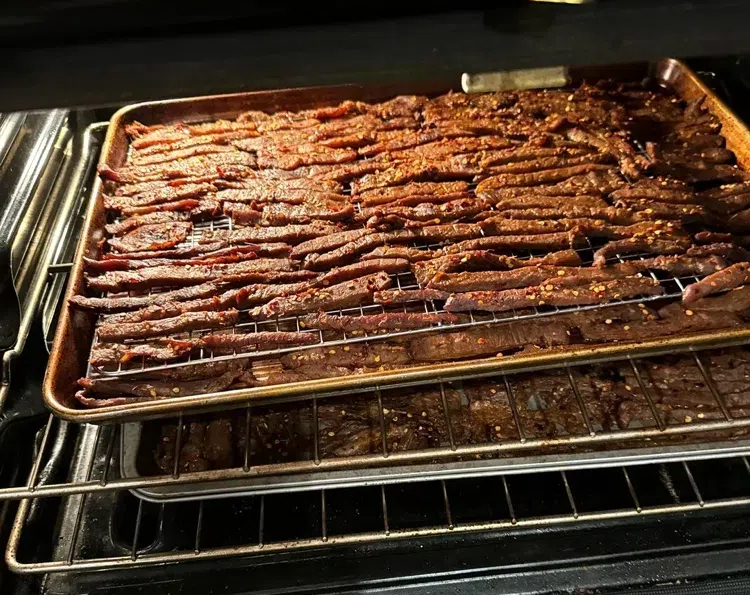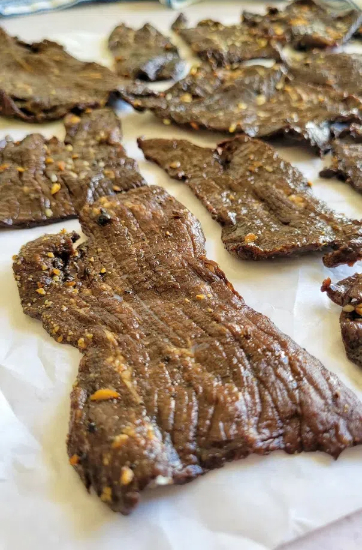
Content Menu
● Understanding Food Dehydration
● Benefits of Dehydrating Meat
● Choosing the Right Meat
● Preparation Steps
● Dehydrating Process
● Storage Tips
● Rehydrating Meat
● Common Mistakes to Avoid
● Tips for Perfect Jerky
● Conclusion
● FAQ
>> 1. What types of meat can I dehydrate?
>> 2. How long does it take to dehydrate meat?
>> 3. Do I need to cook the meat before dehydrating?
>> 4. How should I store dehydrated meat?
>> 5. Can I use marinades when preparing meat for dehydration?
● Citations:
Dehydrating meat is an excellent method for preserving it, enhancing its flavor, and creating delicious snacks like jerky. This guide will walk you through the entire process of using a food dehydrator to prepare meat, ensuring you achieve the best results.

Understanding Food Dehydration
Food dehydration is the process of removing moisture from food, which inhibits the growth of bacteria, yeasts, and molds. This method is particularly effective for meats, allowing them to be stored for extended periods without refrigeration.
Benefits of Dehydrating Meat
- Long Shelf Life: Dehydrated meat can last for months or even years when stored properly.
- Lightweight: Ideal for backpacking and camping, dehydrated meat is much lighter than fresh meat.
- Flavor Concentration: The dehydration process intensifies the flavors of the meat, making it more enjoyable.
Choosing the Right Meat
When selecting meat for dehydration, consider the following:
- Lean Cuts: Opt for lean cuts of meat to minimize fat content, which can spoil quickly. Good choices include:
- Chicken breast
- Turkey breast
- Lean beef cuts (e.g., sirloin)
- Freshness: Always use fresh meat to ensure the best quality and flavor.
Preparation Steps
1. Trim Fat: Remove any visible fat from the meat as it can lead to spoilage.
2. Cut into Uniform Pieces: Slice the meat into thin strips (about 1/4 inch thick) or small cubes. Uniform sizes ensure even drying.
3. Marinate (Optional): For added flavor, marinate the meat in your choice of spices and sauces for several hours before dehydrating. Common marinades include soy sauce, Worcestershire sauce, garlic powder, and pepper.
4. Pre-Cook (Important): Cook the meat to a safe internal temperature:
- Beef should reach at least 160°F (71°C).
- Poultry should reach at least 165°F (74°C).
Dehydrating Process
1. Set Up Your Dehydrator: Preheat your dehydrator according to the manufacturer's instructions. Typically, set it between 145°F (63°C) and 160°F (71°C) for meats.
2. Arrange Meat on Trays: Place the prepared meat strips on the dehydrator trays in a single layer without overlapping.
3. Dehydrate: Allow the meat to dehydrate for approximately 6-12 hours. Check periodically:
- The meat should be brittle and break easily when bent.
- If oil appears on the surface during drying, pat it off with paper towels.
4. Cooling: Once dried, let the meat cool completely before storing it.

Storage Tips
- Airtight Containers: Store dehydrated meat in airtight containers or vacuum-sealed bags to keep moisture out.
- Cool, Dark Place: Keep your storage containers in a cool, dark place away from sunlight to prolong shelf life.
- Labeling: Always label your containers with the type of meat and date of dehydration for easy identification later.
Rehydrating Meat
To rehydrate your dried meat:
1. Soak in warm water until fully reconstituted (about 10-30 minutes depending on thickness).
2. Use in soups, stews, or as a protein addition to meals.
Common Mistakes to Avoid
While dehydrating meat can be straightforward, there are common pitfalls that can affect quality:
- Not Trimming Fat Properly: Leaving too much fat can lead to rancidity during storage.
- Inconsistent Slicing: Unevenly sliced pieces will dry at different rates; thicker pieces may remain moist while thinner ones become over-dried.
- Skipping Marination: While optional, marinating adds significant flavor and enhances the overall taste of your jerky or dried meat.
- Ignoring Temperature Guidelines: Always adhere to recommended temperatures and times to ensure food safety.
Tips for Perfect Jerky
1. Use Lean Cuts: Cuts like eye of round roast or flank steak are ideal due to their low-fat content.
2. Freeze Before Slicing: Partially freezing the meat makes it easier to slice thinly and uniformly.
3. Experiment with Marinades: Don't hesitate to try different combinations of spices and liquids; this can greatly enhance flavor profiles.
4. Check Regularly During Dehydration: Start checking your jerky after about 4 hours; depending on thickness and humidity levels, it may take longer or shorter than expected.
5. Taste Test for Doneness: Once you think it's done, taste a piece! It should be chewy but not tough; you want it flexible enough not to snap when bent.
Conclusion
Using a food dehydrator for meat not only extends its shelf life but also enhances its flavor and convenience for meals on-the-go. With proper preparation and storage techniques, you can enjoy delicious dehydrated meats anytime.

FAQ
1. What types of meat can I dehydrate?
You can dehydrate various types of lean meats such as chicken breast, turkey breast, lean beef cuts (like sirloin), and even fish like tuna.
2. How long does it take to dehydrate meat?
The dehydration time varies based on thickness and type but generally ranges from 6 to 12 hours at temperatures between 145°F (63°C) and 160°F (71°C).
3. Do I need to cook the meat before dehydrating?
Yes, it is essential to cook the meat to safe internal temperatures before dehydrating to eliminate harmful bacteria.
4. How should I store dehydrated meat?
Store dehydrated meat in airtight containers or vacuum-sealed bags in a cool, dark place to maximize shelf life.
5. Can I use marinades when preparing meat for dehydration?
Absolutely! Marinating adds flavor; just ensure you drain excess marinade before placing the meat in the dehydrator.
Citations:
[1] https://explorenborgen.com/dehydrating-meat/
[2] https://www.backpackingchef.com/dehydrating-meat.html
[3] https://www.campkitchen.ca/blog/dehydrating-basics
[4] https://homesteadingfamily.com/preservation-101-intro-to-dehydrating-food/
[5] https://www.jerkyholic.com/how-to-make-beef-jerky-with-a-dehydrator/
[6] https://excaliburdehydrator.com/pages/intro-to-dehydrating
[7] https://www.allrecipes.com/article/how-to-use-a-food-dehydrator/
[8] https://littlehousebigalaska.com/2022/01/beef-jerky-food-dehydrator.html
[9] https://fyi.extension.wisc.edu/safepreserving/files/2015/07/Making_Safe-Jerky_in_a-Home_Dehydrator.pdf
[10] https://peopleschoicebeefjerky.com/blogs/news/how-to-make-beef-jerky-in-a-dehydrator











